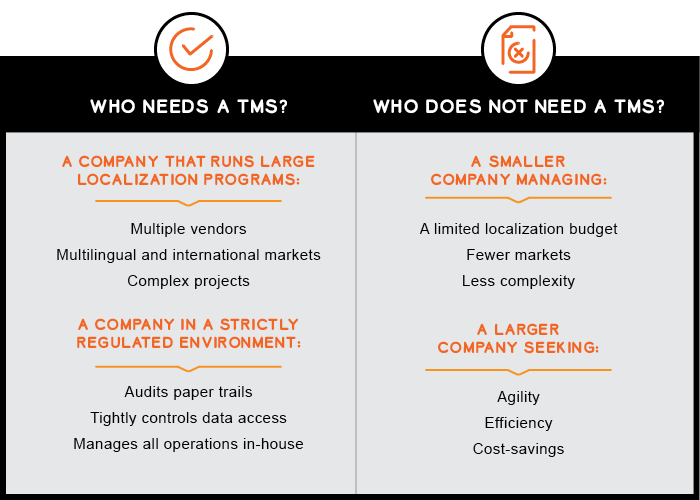- WHAT WE DO
- AI

- Industries

Content Services
- Technical Writing
- Training & eLearning
- Financial Reports
- Digital Marketing
- SEO & Content Optimization
Translation Services
- Video Localization
- Software Localization
- Website Localization
- Translation for Regulated Companies
- Interpretation
- Instant Interpreter
- Live Events
- Language Quality Services
Testing Services
- Functional QA & Testing
- Compatibility Testing
- Interoperability Testing
- Performance Testing
- Accessibility Testing
- UX/CX Testing
Solutions
- Translation Service Models
- Machine Translation
- Smart Onboarding™
- Aurora AI Studio™
Our Knowledge Hubs
- Positive Patient Outcomes
- Modern Clinical Trial Solutions
- Future of Localization
- Innovation to Immunity
- COVID-19 Resource Center
- Disruption Series
- Patient Engagement
- Lionbridge Insights
Life Sciences
- Pharmaceutical
- Clinical
- Regulatory
- Post-Approval
- Corporate
- Medical Devices
- Validation and Clinical
- Regulatory
- Post-Authorization
- Corporate
Banking & Finance
Retail
Luxury
E-Commerce
Games
Automotive
Consumer Packaged Goods
Technology
Industrial Manufacturing
Legal Services
Travel & Hospitality
SELECT LANGUAGE:
This is the second part in The Future of Language Technology Series, which explores the changes of language delivery as a result of technological developments.
Are you a Korean app developer ready to crack the U.S. and Chinese markets? Is your Silicon Valley unicorn ready for its first, non-English audience? Are you spinning off from a large company that manages its complex localization program using several vendors? In all these cases, you must now determine your own multilingual localization strategy. Is it necessary to buy language translation management software to keep the flow going? Perhaps it isn’t.
In part one of our series, The Future of Language Technology: Evaluating a Multivendor Strategy, we explore the pros and cons of a multivendor strategy, which can influence the need for language translation management software. Now, we offer guidance on translation management software to help prevent you from buying technology you may not need.
What Is a TMS and How Does It Work?
TMS stands for Translation Management System, and it is the principal technology used in the localization industry. It allows enterprises to manage and automate their content translation workflows as well as administer the entirety of their localization operations.
A TMS can range from being a relatively simple system to a very complex enterprise-grade system. At its most basic level, it works as a distribution system that puts different pieces of content through appropriate workflows. It can filter different file types, extract text for translation and plug in different technologies, like translation memories. A TMS enables collaboration across teams that are working on layout or doing a final review of the content.
In addition, a TMS helps route content and automate some of the decisions that humans would need to make during the production process. Some of the key features of a TMS include:
- Workflow management
- Vendor management
- Computer-aided translation
- Computer-aided review
- Machine translation
- Integration with a Content Management System (CMS), Product Information Management (PIM) system or Digital Asset Management (DAM) system

Who Needs a TMS and Why?
It some cases, it makes sense for a company to invest in a TMS, especially if it runs large localization programs, works with multiple vendors or has large volumes of content to localize. This usually applies to enterprises or mid-market companies that operate in multilingual and international markets. Their projects are generally complex, involving hundreds of pages of content and a variety of content types to localize, including webpages, videos, apps, support documentation and product and marketing collateral. These companies are managing several pricelists and multiple quality indicators.
A company should also consider a TMS deployment if it works in a strictly regulated environment. This would include the life sciences and legal sectors, where companies are required by law to audit paper trails, tightly control data access and manage all their operations in-house.
In these cases, a TMS manages the intricacies associated with the operations. It plays a role in helping companies scale globally, form customer relationships in new markets, create brand awareness and meet legal requirements. But as advantageous as these benefits are, a TMS is not for all companies.
Who Does Not Need a TMS and Why?
Smaller companies or companies operating in fewer markets should be cautious about deploying a TMS. These companies usually won’t need the wealth of features that a TMS brings, and they will struggle to monetize their investment.
It is both complicated and costly to deploy and maintain a TMS. These burdens can add pressure to already stretched marketing or localization budgets. Resources that should be used to create content may be diverted to operate the TMS instead. This can ultimately interfere with content development and hinder products from getting to market quickly. In these cases, a TMS will not be worth the cost.
Larger companies that value agility, efficiency and cost-savings may also want to consider an alternative to a TMS.
What Is the Alternative to a TMS?
Engaging a Language Service Provider (LSP) that offers technology as part of its localization services is an alternative to a TMS. We recommend that companies pursue this option if they do not need—or suspect they can do without—a TMS. In these cases, the LSP manages all the complexity on behalf of the company. A single language vendor that provides Machine Translation with Post Editing services can also eliminate the need for a TMS.
Additionally, many companies already have a CMS, PIM or DAM in place that supports the most common translation and review workflows. A modern CMS, PIM or DAM for localization has the benefit of handling the translation side of things in a native environment, which promotes simplicity. An experienced localization partner coupled with a CMS, PIM or DAM is more than adequate to guarantee the success of any multilingual content strategy.
This alternative approach to a TMS provides flexibility and scalability, and it removes all the friction and hardship associated with a large technical deployment and TMS maintenance. While companies realize the same benefits achieved from a TMS, they can also leverage the efficiency associated with the use of Artificial Intelligence (AI) and Machine Translation (MT) technologies. As a result, companies can focus on their customers and devote more of their resources towards crafting that perfect message.

What Is the ROI of a TMS Investment?
We’ve seen our customers spend more than $90,000 per year to deploy and maintain an enterprise-scale TMS. To estimate your Return on Investment (ROI), it is useful to compare your localization technology costs with your total localization spend. Based on our experience, we suggest companies avoid spending more than 10% of their yearly localization budget on translation technology.
We believe if you spend less than $2 million per year on localization, you will benefit from engaging with an LSP that offers a technology solution as part of its solution. From our vantage point, it only makes sense to consider investing in a TMS if you spend more than $2 million per year on localization. Even then, the acquisition of a full-blown TMS may still be unnecessary. If you are operating in a regulated industry or have dozens of different types of content and localization workflows to manage, a TMS can be helpful but still not mandatory.
Get in touch
Visit our site to learn how our suite of cutting-edge platforms can connect you to your customers. If you believe you're overspending on your translation technology or want help evaluating whether to use a TMS, contact us.



